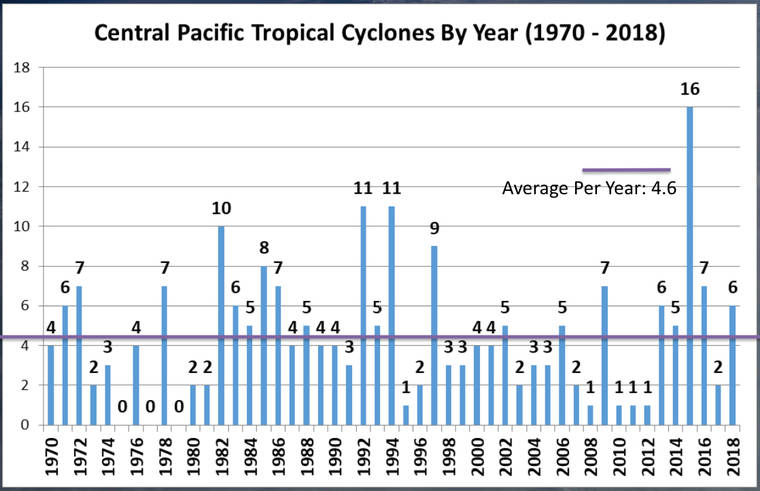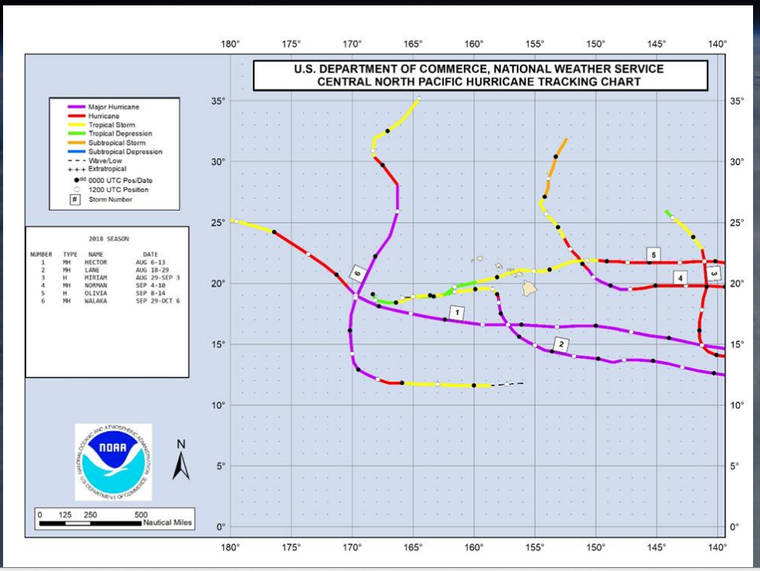LIHUE — Predictions are for five to eight tropical cyclones in the Central Pacific for the 2019 hurricane season, according to the National Oceanic and Atmospheric Administration.
That’s higher than was predicted in 2018 and above the four to five tropical cyclone average for hurricane predictions. There’s a 70% chance of an above-normal season, a 20% chance of a near-normal season and 10% chance of a below-average season.
Hurricane season goes from June 1 through Nov. 30.
NOAA and its partners announced the 2019 hurricane outlook on Wednesday, bringing together forecasters and emergency management personnel.
NOAA’s John Bravender listed the near-misses and hurricane impacts that hit Hawaii in 2018 — days of record rainfall, flooding from an offshore hurricane, wind damage and flash flooding from a weakening tropical storm and coastal erosion and road closures from a hurricane moving away from the islands.
“People saw this damage and realized how lucky we were at how it panned out,” Bravender said. “Eventually our luck will run out. Will it be this year? I hope not, but a wise man once said, ‘hope is not a plan.’”
He and other partners stressed preparedness — establishing 14 days’ worth of food and water, going over emergency response plans with family, and topping off gas tanks, reminders of things Bravender said the public already knows.
“The 2018 hurricane season came as an afterthought to a series of many different natural disasters,” Bravender said. “It primed the public for preparing for this (2019) hurricane season.”
The 2018 hurricane prediction for the Central Pacific was three to six tropical cyclones. The season brought six tropical storms into the Central Pacific.
“Notably last year, all of them at some point were hurricanes during their lifecycle,” said Chris Brenchley, director of NOAA’s Central Pacific Hurricane Center.
Predicting the number of tropical storms relies on two different factors: the ENSO (El Nino vs La Nina cycles) and wind sheer.
Currently, an El Nino is at play, which means warmer waters.
“There is plenty of warm water out there,” Brenchley said. “This El Nino condition is likely to continue through this hurricane season.”
Less consistent and weaker wind sheer is predicted for the season, too, which will contribute to a higher probability of tropical cyclones in the Central Pacific.
•••
Jessica Else, environment reporter, can be reached at 245-0452 or jelse@thegardenisland.com.



